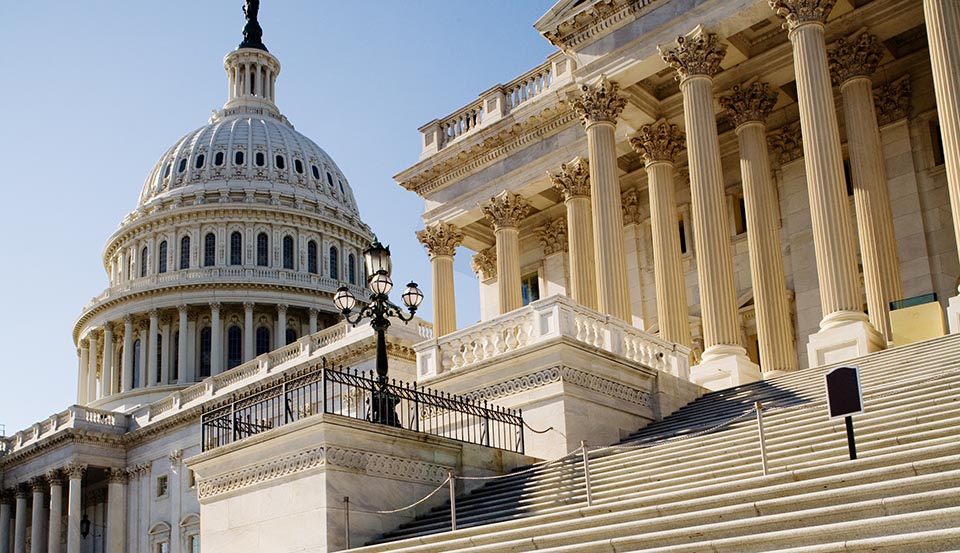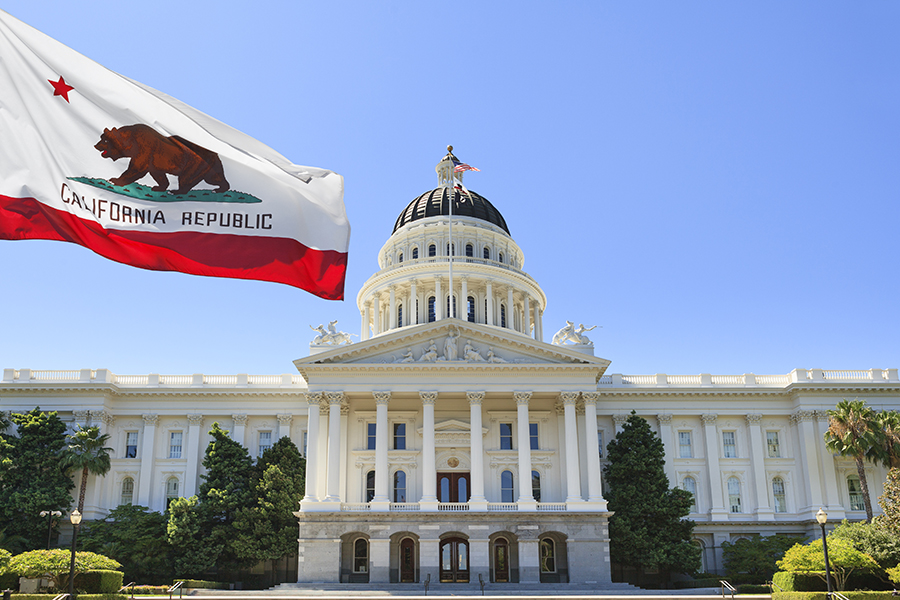The GND can create opportunities for private lenders to make money while playing a role in rebuilding and renewing the country’s vital infrastructure.
Suspend disbelief for a moment and imagine the Green New Deal (GND) somehow has passed into law, despite the fractured government in Washington. What would it mean for private lenders?
It all depends on who’s definition of a GND we’re working with. In fact, today’s GND proposals are more of an elastic set of goals as opposed to concrete proposals. Before setting it aside as a pipe dream, remember that all landmark social programs were pipe dreams when first taken up at the federal level. At first the obstacles to Social Security, Medicare, Civil Rights, the Environmental Protection Agency and marriage equality becoming law seemed insurmountable; however, after some heavy lifting, they became law.
Green Oigins
The genesis of a GND began more than a decade ago with an opinion piece from journalist Thomas Friedman. Environmental groups around the world picked up on it, and versions of it were a major plank for the Green Party in the U.S., including for their 2016 presidential candidate Jill Stein. The common goal was to support the U.N. climate panel’s report, which calls on all nations to reduce carbon emissions to prevent a further 1.5 degrees Celsius of global warming.
The GND rose to national prominence earlier this year when freshman Representative Alexandria Ocasio-Cortez and Senator Ed Markey sponsored a pair of resolutions. Permutations of the bill were discussed, each designed to address both climate change and economic inequality. It proposed to transition the U.S. to 100% renewable, zero-emission energy sources in 10 years and included investments in electric cars and high-speed rail to help get us there. It would implement the carbon tax that was sidelined after the Obama administration left office and set out to eliminate greenhouse gas emissions from the agricultural sector and create “clean manufacturing” facilities.
The GND was heavy on social programs. It proposed to guarantee employment and retirement security; provide universal health care, housing, economic security; ensure access to clean water and air, healthy food and nature; invest in better education and subsidized college tuition; and reduce corporate monopolies. With inclusion of such quasi-socialist talking points, it was considered by many scientists and the majority of both parties to be more of a political stunt than a serious resolution. Further derision ensued after “frequently asked questions” documents released by Ocasio-Cortez staff went to even greater extremes, enabling critics to decry that the GND would ban air travel and eliminate all carbon emissions in 10 years, which were false.
Republican Senate leadership swiftly killed it with a vote allowing no hearings, but the congressional upstarts were successful in their aim to make the GND part of the national conversation.
Next Green Thing
Whether you think the GND was an audacious call to put a man on the moon or a self-serving and unrealistic socialist manifesto, it’s prudent to examine which aspects of the GND could generate bipartisan support and potentially become law. The most realistic portions are those dealing with infrastructure.
Since the beginning of the Trump administration, both political parties held out hope of passing major legislation to fund the renewal of America’s infrastructure. This has yet to happen, but among the concepts espoused, the GND infrastructure renewal is the most realistic. Such legislation would create jobs to repair, upgrade and expand our country’s roads, bridges, energy grid and water systems. Last year the federal government spent over $150 billion on infrastructure and other physical capital projects, according to the Congressional Budget Office.
Much more is needed.
The kind of infrastructure projects that could come about in some modified GND may include expanding light rail systems, replacing lead pipes in municipal and rural water works, upgrading the nation’s electricity grid, adding smart technology to support wind and solar power, remodeling stormwater systems, and restoring wetlands and other natural buffers to reduce flooding.
Private/Public Partnerships
While there has been talk about federal direct-lending to support GND—ideas floated included a World Bank-style undertaking—it would be difficult to find an appetite for that in Washington.
Any federal direct lending would be contentious, given previous failures like the defaulted loan guarantees made under the Obama administration to solar panel maker Solyndra, which eventually went bankrupt.
In lieu of direct funding mechanisms, federal funding would have to come indirectly. Federal money could be directed through state and local governments, while other projects could involve private/public partnerships.
For private lenders, public/private opportunities hold promise. Today’s housing market offers plenty of case studies of public-private financing already at work. Lenders to new starts and renovations of single-family and multifamily projects frequently use loan guarantees from Fannie Mae, Freddie Mac, HUD and other agencies. However, GND projects suitable for public/private finance are diverse and go well beyond the construction sector. The following are four opportunities for further consideration:
- Opportunities for “Liquidity”
The first example is water systems that connect water utilities with their customer—the pipes. The costs to upgrade the nation’s pipes are staggering. By one estimate, U.S. water systems need to invest $1 trillion over the next 20 years. Local governments are not particularly good at knowing which pipes and sewer lines actually belong to them versus state, county or private landowners. Since some underground pipes may be as old as 100 years, ownership of such assets is not well documented. Several states have passed legislation that allows towns to sell their water systems at “fair market value,” passing the costs of repairs, maintenance and billing to the new owner.
Of course, for private lenders to participate in the water utility sector, they’d need clear title to underlying collateral. Establishing a mechanism to properly title water pipes and pumps is a critical first step to opening up financing. Assuming that gets figured out, this is an area ripe for lending because the income stream for water systems (no pun intended) is very reliable and low risk. Most communities have access to only one water supplier. Pension funds, insurance companies and other long-term institutional investors have balance sheets with large and growing long-term liabilities, which they need to match with long-term assets. So, public-private partnerships can get waterworks projects going, and follow-on institutional investment can come in later as a means of refinancing.
Can private lenders add value here? Absolutely. Our industry’s speed and flexibility represent an important capability for the early part of the value chain. This is a high-risk phase.
Unexpected events are likely due to the complexity of infrastructure projects. Default rates are relatively high. Initial commitments by debtholders must extend far beyond this stage, as a project does not generate cash flows in this phase. We can be nimbler with local projects than banks, and operators can refinance later for a lower interest rate and lengthier tenor from institutional investors who need long-term returns. If projects are structured properly, the efficiency gains from private sector involvement can easily outweigh additional funding costs.
- Electricity in the Air
Another major concern of the GND is America’s aging electricity grid. As of this writing, blackouts triggered by surging demand in summer heat have blackened parts of the northeastern U.S. With higher industrial and consumer demands on voltage than ever before, significant improvements are needed to make the nation’s electrical grid more reliable.
The major transmission networks don’t need private lending. They are usually managed by utilities, and some networks are managed by entities known as Independent System Operators (ISOs) or Regional Transmission Organizations (RTOs). Most of them access capital through bonds or the equity markets.
Where private lending can come into play is with smaller scale complex projects aimed at making the grid more efficient. For example, storage technologies need to be improved and built to allow electricity to be saved for high demand peaks, particularly important for renewable energies like wind and solar. More advanced meters such as self-programming thermostats in multiuse and mixed commercial real estate need to be deployed to provide for better data collection leading to better demand management. More smart charging stations are needed to connect electric cars to the electric grid.
Private lenders cannot only help to provide financing for such projects, but also help to ensure that the project is run efficiently. If contracts are designed properly, private investors have an incentive to see that an infrastructure project is executed efficiently—because it increases the likelihood that their investment is safe and as profitable as expected.
- Renewing Renewables
Distributed energy projects, like solar panels on individual homes, add to the total electrical output in the country. Investments made by consumers (e.g., purchasing energy-efficient appliances, constructing more energy-efficient buildings and putting in more insulation) save money and utilize energy more efficiently. At the state level, programs like the clean-energy loan-financing system supported by the Energy Department, known as PACE, already leverage private-public financing.
It’s easy enough to imagine the expansion of such public/private programs at a much larger scale, and one that would involve nonbank lenders. Projects might start with hard money loans and then transition to Fannie Mae or Freddie Mac support once the energy project is completed.
Every participant in the construction industry should consider how to integrate renewable energy sources like wind and solar into new builds, because indirect federal support for such programs could stem from some future GND, causing demand for them to grow because operators benefit from reduced expenses. Private lenders need to educate themselves about the costs, asset liquidation value and exit strategy for hard money loans that support distributed energy projects.
- Banding Together
Because of the relatively higher risk profile for infrastructure projects, bank loans are generally extended by a syndicate of banks rather than a single bank. Syndicated loans diversify the risks of a single project across a group of banks.
Nonbank lenders should consider collaborating to approach infrastructure lending in a similar fashion. A lead lender can manage the origination, documentation and servicing of an infrastructure hard money loan. In the unfortunate event things go south and the borrower defaults, the lead bank can manage loss mitigation efforts, while the risk and recovery are spread fairly across the syndicate of nonbank lenders. This approach can allow hard money lenders to start to gain experience in GND-related projects without betting the ranch.
The GND may be a political fever dream. Or it may serve as political cover for the congressional rank and file on the left to get on board with mainstream Democrats and the Republicans on massive infrastructure legislation. The aspects of such legislation that are most likely to come to fruition are future public/private financing opportunities where private lenders can add value because of our speed and flexibility. If it all comes to pass, and we step out of our box a little bit, the GND can represent important opportunities to make money and feel great that we are helping rebuild and renew the country’s vital infrastructure.












Leave A Comment